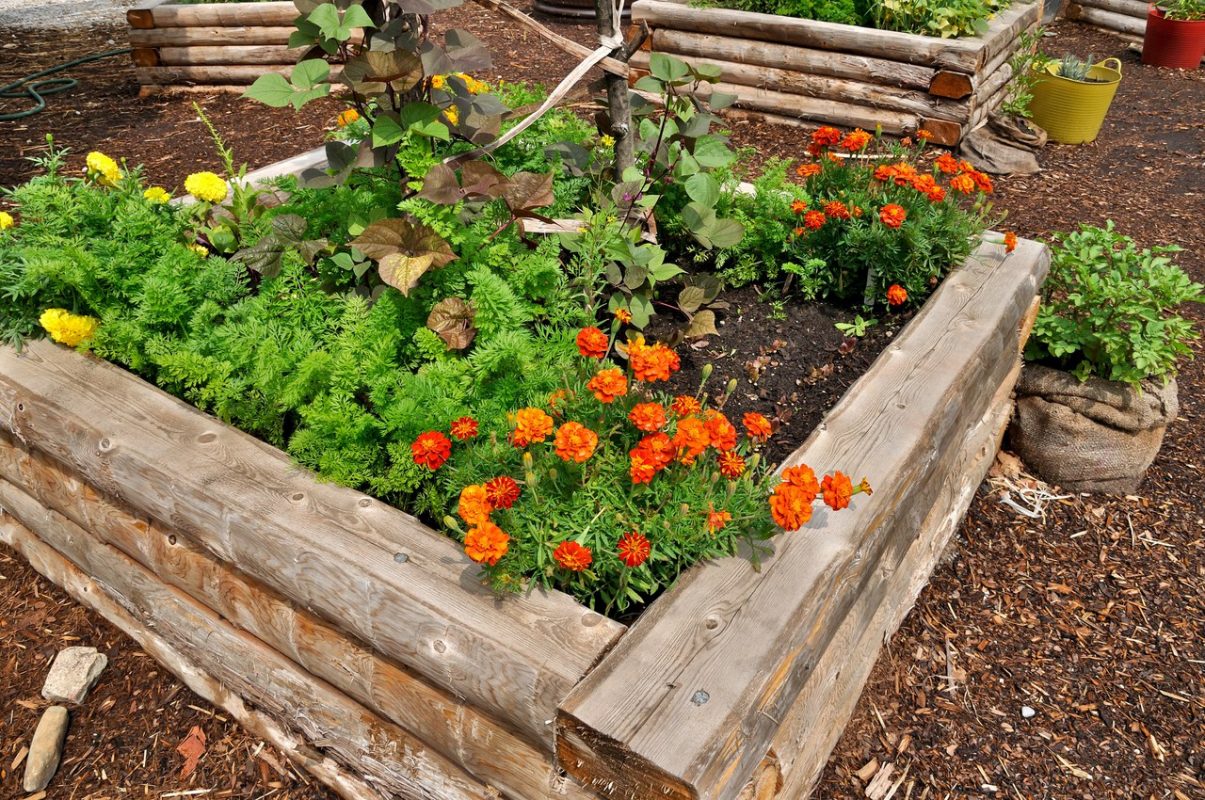Meals growers have prolonged added nutritional vitamins to their gardens by soaking manure or compost in containers of water and pouring the resultant brew on their vegetation. Nevertheless in response to soil microbiology educated Dr Elaine Ingham, this typical methodology of making “compost tea” can produce blended outcomes, considerably by the use of the necessary microbial life the liquid incorporates. Dr Ingham, chief scientist on the US pure evaluation institution, the Rodale Institute, first studied anaerobic “tea-like preparations” in 1977.
“It was my first introduction to the horrors of what can happen when manures are allowed to ferment,” she says. “Quite a few the organisms throughout the ferment had been human disease-causing organisms, or pathogens.”
Animal manures comprise large portions of E.coli, Dr Ingham says, and will on a regular basis be composted. Nevertheless even when compost comparatively than manure is used to make tea, the bucket methodology can be problematic. When micro organism develop too shortly they expend all the oxygen, creating anaerobic circumstances that favour pathogens and set off good microbes to go dormant.
“If the compost should not be mature and there are lots of accessible meals [for bacteria] throughout the compost it is going to in all probability set off anaerobic circumstances,” Dr Ingham explains. “If the compost is mature, it is not as extra more likely to result in one factor detrimental to your plant… quick microbial improvement gained’t occur.”
Dr Ingham says that weed teas (made by soaking weeds in water) moreover produce blended outcomes. She says that whereas weeds from a healthful yard can have good microorganisms on their surfaces, weeds from gardens with heaps pests and sickness points may produce tea full of sickness organisms.
Weed teas normally flip anaerobic throughout the first week, Dr Ingham says. The most effective issue to do is depart them for weeks and even months. When the meals runs out, the micro organism stop rising, oxygen strikes once more into the tea and since it turns into cardio the great microbes emerge from dormancy, rising slowly on the wastes that the pathogens produced.
Ample life
To shortly produce a compost tea stuffed with good microbial life (micro organism, fungi, protozoa and nematodes), a particular methodology is required. Currently loads of farmers and yard growers are “brewing” compost tea using a relentless, substantial present of oxygen. This allows good microorganisms to multiply rapidly with out turning the brew anaerobic. The result is actively aerated compost tea (AACT). It incorporates an abundance of natural life: the essence of pure farming.
Compost tea is popping into extensively adopted by pure farmers and is used on quite a lot of crops along with greens, fruit, vines, cotton and cereals. It is used on bushes, grass and gardens in public parks, on golf packages and bowling greens, and throughout the remediation of mining web sites and saline and acidic soils.
Good compost tea requires good compost. To make this, assemble a minimal one-cubic-metre heap of balanced and varied provides (50 per cent brown, equal to twigs, dried grass and shredded paper; 40 per cent inexperienced, equal to current grass and delicate stems; and 10 per cent high-nitrogen, equal to manure or legumes) and maintain it damp nevertheless not moist.
Monitor with a temperature probe and change the heap each time its temperature rises above 55°C and begins to drop, or if it reaches 65°. Everytime you flip the heap and the temperature would not rise as soon as extra, it is ready for tea brewing.
When you occur to droop this compost in water and be part of a pump, the turbulence knocks microbes off the compost and into the water. Give the microbes meals, equal to kelp, fish or molasses, they normally breed prolifically.
In reality, you may introduce these microbes to your yard simply by making use of compost. Nevertheless spreading compost over large areas can be back-breaking and expensive. Compost tea is easier – a 20-litre brew constructed from a handful of compost can inoculate an acre (nearly half a hectare) with good microbes. Compost tea can even be utilized as a foliar spray, with potential pest and disease-fighting benefits (see beneath).
When you’re undecided regarding the top quality of your compost, author and soil educated Tim Marshall suggests enlivening it with these days collected liquid from a worm farm. “It is free and easily obtained and will definitely comprise viable organisms,” he says.
Soil biology
“If we ever want to chop again the value of rising crops, and have to have sustainable manufacturing the place we regenerate soil instead of destroying it, we have to deal with managing soil life,” says Dr Ingham, who in 1996 primarily based Soil Foodweb Australia, which runs soil meals internet packages and advises farmers on compost tea use.
Whereas an in depth description of the soil meals internet is previous the scope of this textual content, to summarise:
Crops attraction to microbes to their root zones by giving off “exudates” of carbohydrates. Microbes feed on the exudates and each other, producing their very personal wastes and exudates, which turns into meals for vegetation.
Any nutritional vitamins that vegetation don’t use are locked up as soon as extra by totally different microbes, which means that – not like chemical fertilisers – they gained’t be washed away. Meals is persistently being cycled, and made accessible for vegetation to take up each time they need it.
Along with enhancing nutrient availability, a healthful soil meals internet will:
improve soil building and in the reduction of compaction: bacterial exudates are sticky and make soil particles stick collectively, whereas fungi, earthworms and arthropods switch by the use of the soil, creating pathways; administration sickness: fungi and micro organism kind defending nets spherical roots, outcompete pathogens or devour them; decompose chemical residues and toxic provides.
Briefly, a balanced soil meals internet is what pure growers must intention for. Chemical fertilisers, pesticides, land clearing and tillage destroy this biology. Compost and compost teas are strategies of inserting it once more.
To buy or make a brewer?
As a substitute of the bucket or bin brew methodology, greater outcomes come from brewers that pump oxygen into the combo. Commercially made compost tea brewers fluctuate in measurement from 20 litres to a whole lot of litres. Home-made brewers are cheaper and can be easy to put collectively. When you occur to watch the becoming plan they can even be environment friendly (see ‘Make Your Private’).
“Home-made brewers can be just about nearly as good as mass-produced brewers,” Dr Ingham says. “The sticking degree is aeration and good cleaning.” Observe: In tales nonetheless accessible on-line, Dr Ingham describes making a brewer using aquarium airstones. She not recommends these, which she says are robust to clean. Anaerobic microbes assemble up, ensuing within the contamination of tea with pathogens.
Learn to use compost tea
Compost teas are utilized in just a few strategies. Sprayed (or watered using a watering can) on soil, they add soluble nutritional vitamins and natural life to that soil. Utilized as a foliar spray, they allow these goodies to occupy the leaf flooring so that baddies equal to powdery mildew have nowhere to get a foothold. Exactly how efficacious compost teas are in stopping sickness has diversified vastly in a number of trials. This may be because of there are so many variables in tea-making. Dr Ingham says points normally come up when trials don’t use well-made compost.
She recommends three foliar features of compost tea in a rising season to handle foliar sickness and bug pests: “Further may be needed in considerably robust seasons or if inadequate air transfer by the use of the crop occurs.”
Compost tea used as a foliar spray will comply with leaves with out together with a surfactant. “Actively rising organisms make glue layers spherical their our our bodies with a view to keep up themselves on surfaces,” Dr Ingham says.
In order so as to add microbial life that may help administration soil pathogens and pests, Dr Ingham recommends an annual utility of compost (a minimal of 3kg of compost added to a 1m seed row), or a lot of features of compost tea to soil yearly.
If using a backpack sprayer to make use of compost tea, it’s important to not kill the great microbes throughout the course of. Nozzle apertures must be no finer than 450 microns. Fan jet nozzles are most interesting, and stress mustn’t exceed 65 PSI (about 4.5 bar). It is best to spray all through cooler parts of the day, when evaporation and UV ranges are low. Dusk is correct. Microbes take 20 minutes to stay to leaves, so apply foliar sprays a minimum of 20 minutes sooner than rain. Soil sprays can be utilized all through rain.
Do I would love a microscope?
Crucial compost tea makers may bear in mind investing about $400 in a microscope to see exactly what they’re brewing. Programs and books may assist with identification of microbes. For these with no microscope, Dr Ingham advises: “Protect circumstances which could be as cardio as potential. Be aware of scent, coloration and plant response if you apply the material.” OG
Fruit bushes develop most interesting in fungal-dominant soils, whereas greens need bacterially dominated soils. Brewing the becoming compost tea will help give the vegetation the circumstances they like most interesting.
Industrial growers rely upon soil exams to brew teas specific to their current soil life and crops. For yard growers, the following recipes, equipped by Soil Foodweb Australia, are a superb place to start. Each recipe makes 20 litres of tea, which may cowl one acre (0.4 hectare), nevertheless could be utilized on a smaller area: you presumably can’t apply an extreme quantity of.
Fundamental perform tea
(balanced fungal-bacterial brew)
- 20 litres water
- 80ml fish hydrolysate*
- 40ml liquid kelp
- 200g compost
Add water to bin. If using metropolis water, activate pump and aerate water for Half-hour to dispose of chlorine. Add meals (fish and kelp) to water. Put compost in ‘tea’ bag. Brew for 24-30 hours.
Vegie patch tea (bacterial brew)
- 20 litres water
- 30ml fish hydrolysate*
- 60ml liquid kelp
- 10ml blackstrap molasses
- 200g compost
Brew as per frequent perform tea, above.
Orchard tea (fungal brew)
- 200g compost
- 10ml fish hydrolosate* blended with
- 20ml water
- 20 litres water
- 80ml fish hydrolysate*
- 40ml liquid kelp
Three days sooner than brewing, feed compost by mixing 10ml fish hydrolysate with 20ml of water and sprinkling over the compost. Preserve compost in a cardboard area (the cardboard will soak up any further moisture and allow compost to breathe) and maintain in a warmth spot (20-30°C). After 2-3 days the compost can have a ‘fuzz’ rising over it – this is perhaps laden with fungal spores. After the compost has ‘fuzzed’ you are capable of brew. Brew as per frequent perform tea, above.
* Fish hydrolysate is constructed from total fish, broken down by enzymes comparatively than heat. It incorporates fish oils which could be good meals for fungi. The additional usually found fish emulsion is way much less environment friendly at rising fungi nevertheless will suffice in its place if need be.
Observe: In scorching local weather in the reduction of meals and brewing time. With in a single day temperatures above 20°C, brewing will take solely 18 hours and meals must be halved. Teas ought for use inside 4 hours of brewing, sooner than oxygen and microbe ranges drop. A quick varied to brewing compost tea is making compost extract. The an identical instruments is anxious, nevertheless solely compost is brewed, with no added meals. It could be used after merely 20-Half-hour of brewing. It should possible be lower in microbial life nevertheless nonetheless environment friendly. Meals for the microbes can be added to the tea merely sooner than it is sprayed.
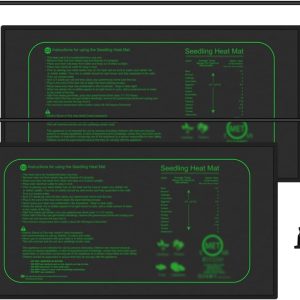 Set of two - 21W Waterproof Warmth Mats for Seedling Germination, 10" x 20.75" Heating Pads for Indoor Plant Development
1 × 26 $
Set of two - 21W Waterproof Warmth Mats for Seedling Germination, 10" x 20.75" Heating Pads for Indoor Plant Development
1 × 26 $ 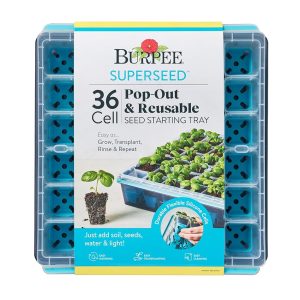 Burpee SuperSeed Seed Beginning Tray | 36-Cell Reusable Tray for Vegetable, Flower, and Herb Seeds | Indoor Seedling Development Equipment | Ideally suited for Germination
1 × 11 $
Burpee SuperSeed Seed Beginning Tray | 36-Cell Reusable Tray for Vegetable, Flower, and Herb Seeds | Indoor Seedling Development Equipment | Ideally suited for Germination
1 × 11 $  iPower Upgraded Seedling Warmth Mat, 48" x 20" Waterproof and Sturdy Germination Heating Pad, Ultimate for Indoor Hydroponic Gardening and Seed Beginning
1 × 33 $
iPower Upgraded Seedling Warmth Mat, 48" x 20" Waterproof and Sturdy Germination Heating Pad, Ultimate for Indoor Hydroponic Gardening and Seed Beginning
1 × 33 $ 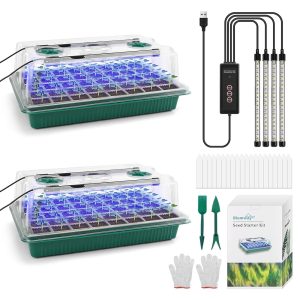 BlumWay 2-Pack Seed Starter Tray Set with Develop Mild, 80 Cell Seedling Trays that includes Humidity Dome/Indoor Plant Germination Equipment, Adjustable Brightness
1 × 43 $
BlumWay 2-Pack Seed Starter Tray Set with Develop Mild, 80 Cell Seedling Trays that includes Humidity Dome/Indoor Plant Germination Equipment, Adjustable Brightness
1 × 43 $  BN-LINK Sturdy Seedling Warmth Mat - Waterproof Hydroponic Heating Pad 10" x 20.75" - Pack of two for Seed Beginning in Greenhouses and Germination
1 × 22 $
BN-LINK Sturdy Seedling Warmth Mat - Waterproof Hydroponic Heating Pad 10" x 20.75" - Pack of two for Seed Beginning in Greenhouses and Germination
1 × 22 $ 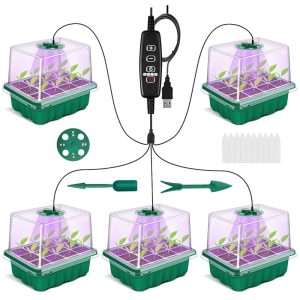 GOONMMILL Seed Starter Tray Set with Timed Develop Gentle – 5-Pack Plant Seedling Starter Package That includes Humidity Domes and Base for Indoor Greenhouse Mini Propagation Station
1 × 27 $
GOONMMILL Seed Starter Tray Set with Timed Develop Gentle – 5-Pack Plant Seedling Starter Package That includes Humidity Domes and Base for Indoor Greenhouse Mini Propagation Station
1 × 27 $ 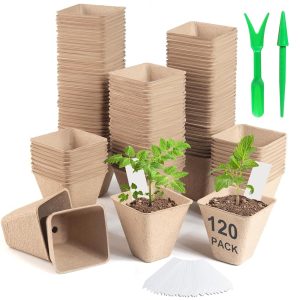 120-Pack of three.15-Inch Sq. Peat Pots for Seedlings - Biodegradable Seed Beginning Pots with Drainage Holes, Contains 30 Plant Labels and a pair of Transplant Instruments
1 × 10 $
120-Pack of three.15-Inch Sq. Peat Pots for Seedlings - Biodegradable Seed Beginning Pots with Drainage Holes, Contains 30 Plant Labels and a pair of Transplant Instruments
1 × 10 $ 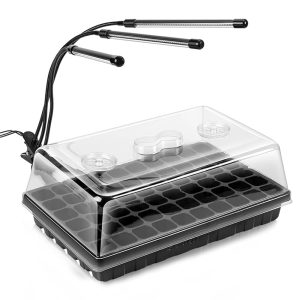 SOLIGT Enhanced Seed Starter Package with Develop Gentle - Sturdy 60 Cell Seed Tray, Humidity Dome for Germinating Seeds, Beginning Seedlings, and Cloning Cuttings
1 × 46 $
SOLIGT Enhanced Seed Starter Package with Develop Gentle - Sturdy 60 Cell Seed Tray, Humidity Dome for Germinating Seeds, Beginning Seedlings, and Cloning Cuttings
1 × 46 $ 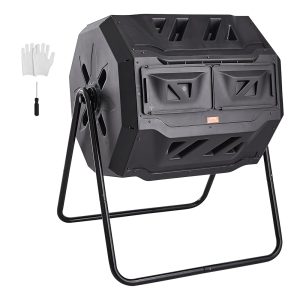 VEVOR 43-Gallon Twin Chamber Compost Tumbler, Massive Rotating Composter with Metal Body and a pair of Sliding Doorways, BPA-Free Bin for Backyard Composting
1 × 62 $
VEVOR 43-Gallon Twin Chamber Compost Tumbler, Massive Rotating Composter with Metal Body and a pair of Sliding Doorways, BPA-Free Bin for Backyard Composting
1 × 62 $ 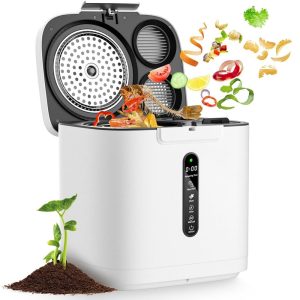 4L Electrical Kitchen Composter - Good Indoor/Outside Compost Bin, Odorless with Auto-Cleansing, 3 Modes, Clever LED Show, Remodel Meals Waste into Backyard Fertilizer
1 × 270 $
4L Electrical Kitchen Composter - Good Indoor/Outside Compost Bin, Odorless with Auto-Cleansing, 3 Modes, Clever LED Show, Remodel Meals Waste into Backyard Fertilizer
1 × 270 $ 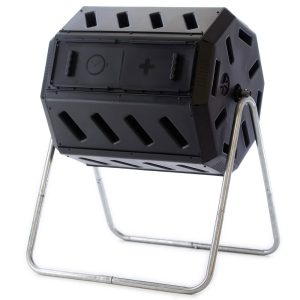 FCMP Out of doors IM4000 Twin Chamber Rotating Composter - Canadian-Made, 100% Recycled Resin Compost Tumbler Bin for Backyard, Kitchen, and Yard Waste, Black (37 Gallons)
1 × 77 $
FCMP Out of doors IM4000 Twin Chamber Rotating Composter - Canadian-Made, 100% Recycled Resin Compost Tumbler Bin for Backyard, Kitchen, and Yard Waste, Black (37 Gallons)
1 × 77 $ 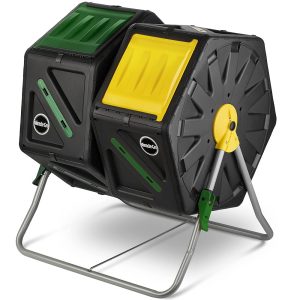 Miracle-Gro Twin Chamber Compost Tumbler – Heavy-Obligation Out of doors Composter with Straightforward-Flip Mechanism and a couple of Sliding Doorways (2x18.5 Gal/70L)
1 × 110 $
Miracle-Gro Twin Chamber Compost Tumbler – Heavy-Obligation Out of doors Composter with Straightforward-Flip Mechanism and a couple of Sliding Doorways (2x18.5 Gal/70L)
1 × 110 $  Miracle-Gro Giant Twin Chamber Compost Tumbler – Consumer-Pleasant, Fast-Processing Composter – All-Season, Sturdy, Excessive-Capability System with 2 Sliding Doorways - (2 x 27.7 gallons /...
1 × 130 $
Miracle-Gro Giant Twin Chamber Compost Tumbler – Consumer-Pleasant, Fast-Processing Composter – All-Season, Sturdy, Excessive-Capability System with 2 Sliding Doorways - (2 x 27.7 gallons /...
1 × 130 $ 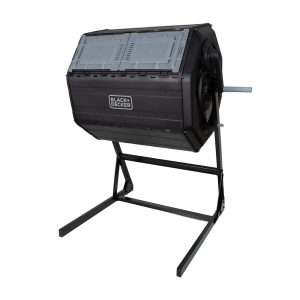 BLACK+DECKER Twin Chamber Compost Tumbler, 40 Gallon Capability with Straightforward Deal with System for Easy Composting
1 × 150 $
BLACK+DECKER Twin Chamber Compost Tumbler, 40 Gallon Capability with Straightforward Deal with System for Easy Composting
1 × 150 $ 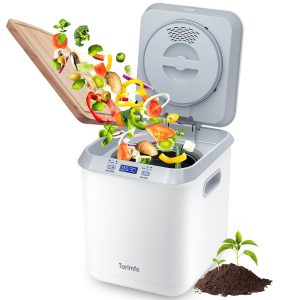 Indoor Electrical Composter, 2.5L Kitchen Countertop Compost Bin, Good Meals Composting Machine with Enhanced Grinding Blade, Odor-Free, Self-Cleansing, Transforms Waste into
1 × 200 $
Indoor Electrical Composter, 2.5L Kitchen Countertop Compost Bin, Good Meals Composting Machine with Enhanced Grinding Blade, Odor-Free, Self-Cleansing, Transforms Waste into
1 × 200 $ 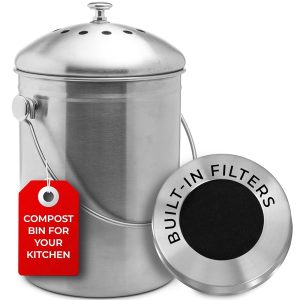 EPICA 1.3-Gallon Odorless Kitchen Compost Bin | Indoor Stainless Metal Composter with Lid and Carbon Filters for Meals Scraps
1 × 25 $
EPICA 1.3-Gallon Odorless Kitchen Compost Bin | Indoor Stainless Metal Composter with Lid and Carbon Filters for Meals Scraps
1 × 25 $ 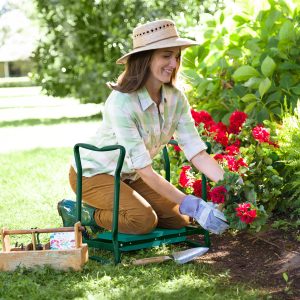 Moveable Backyard Kneeler and Seat with Foam Cushion
1 × 50 $
Moveable Backyard Kneeler and Seat with Foam Cushion
1 × 50 $ 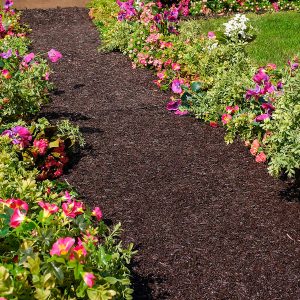 Recycled Rubber Pathway with Everlasting Mulch
1 × 70 $
Recycled Rubber Pathway with Everlasting Mulch
1 × 70 $ 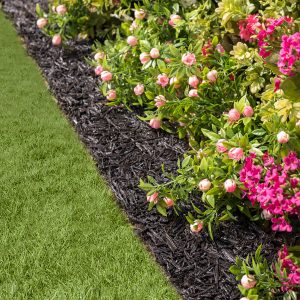 Recycled Rubber Edging for Everlasting Mulching
1 × 40 $
Recycled Rubber Edging for Everlasting Mulching
1 × 40 $ 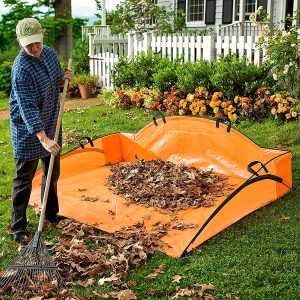 Simple Leaf Collector
1 × 70 $
Simple Leaf Collector
1 × 70 $ 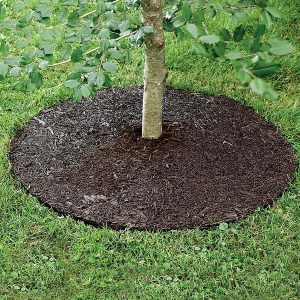 24-Inch Diameter Recycled Rubber Tree Ring for Everlasting Mulching
1 × 40 $
24-Inch Diameter Recycled Rubber Tree Ring for Everlasting Mulching
1 × 40 $ 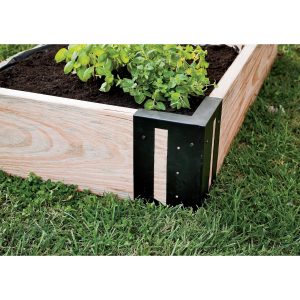 Set of 4 Metal Nook Brackets for Raised Beds
1 × 50 $
Set of 4 Metal Nook Brackets for Raised Beds
1 × 50 $ 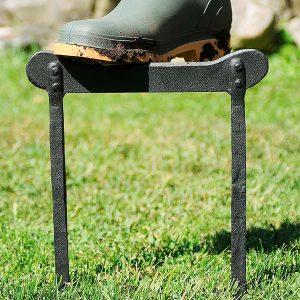 Powder-Coated Wrought Iron Boot Scraper
1 × 35 $
Powder-Coated Wrought Iron Boot Scraper
1 × 35 $ 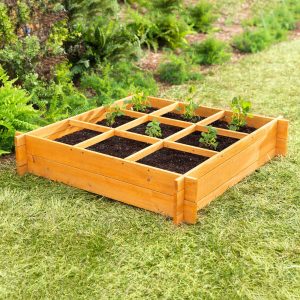 Elevated Wood Backyard Mattress
1 × 130 $
Elevated Wood Backyard Mattress
1 × 130 $ 